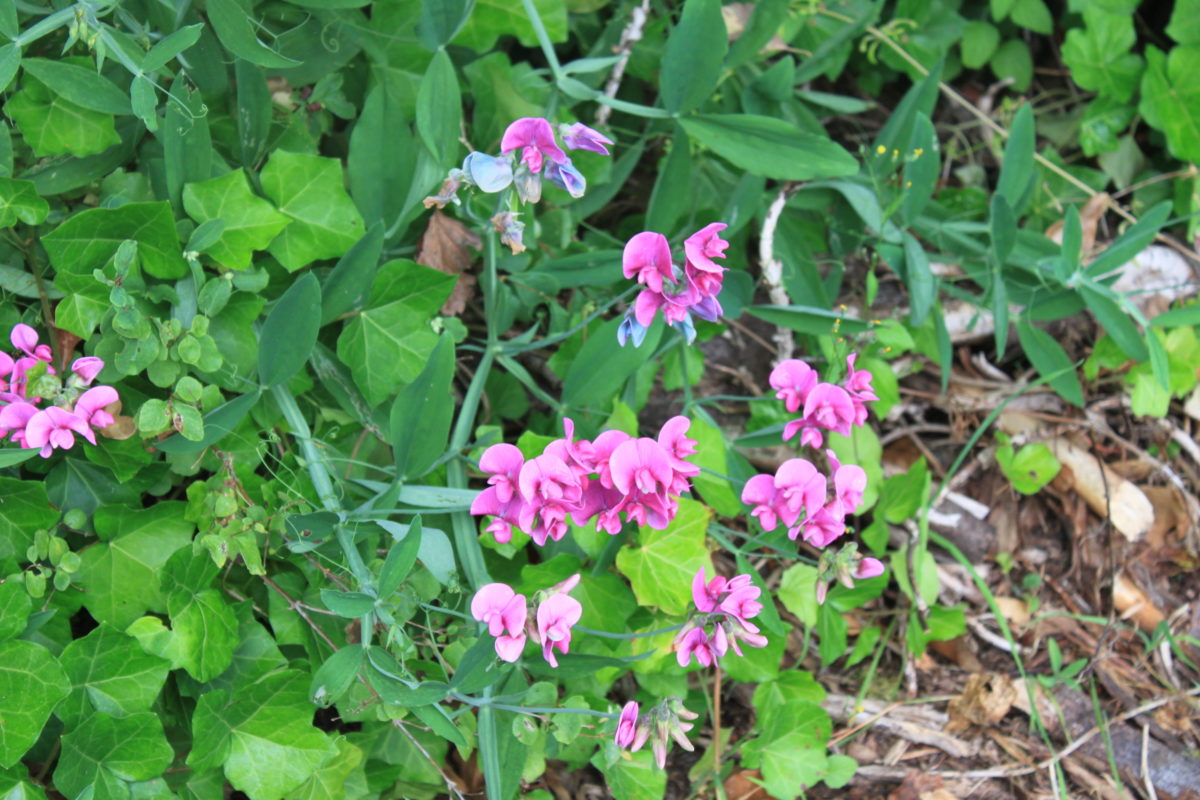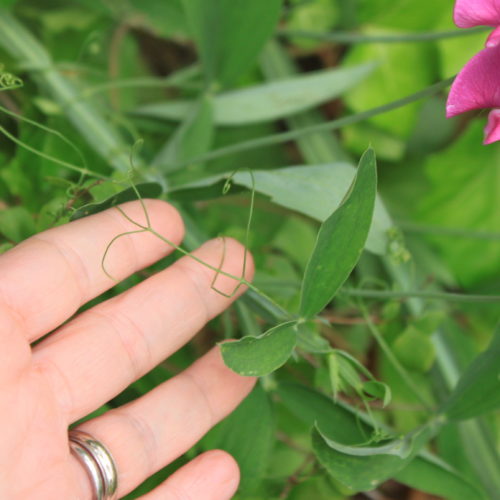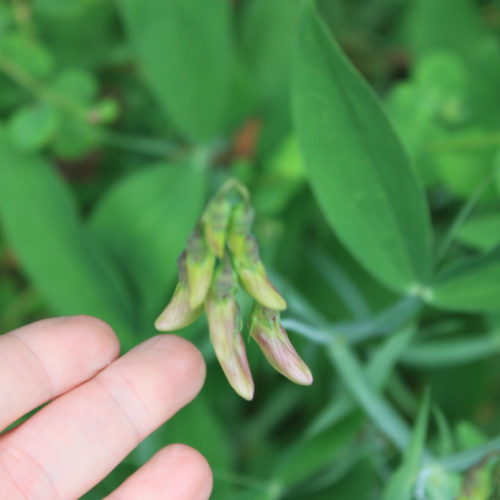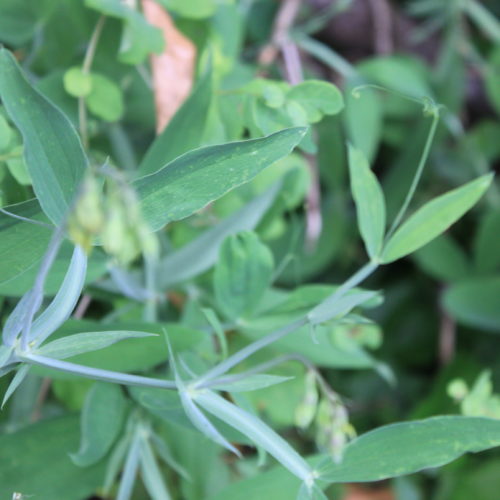Perennial Peavine
Lathyrus latifolius

Family: Fabaceae
Other Common Names: perennial pea, everlasting peavine, everlasting pea, perennial peavine, Perennial sweetpea
Weed class: monitor list
Year Listed: 2014
Native to: Europe
Is this Weed Toxic?:
humans, livestock
Why Is It a Noxious Weed?
This plant is on the monitor list - it is not a listed noxious weed in Washington. Please contact the Washington State Noxious Weed Control Board to report locations where perennial peavine is escaping into undisturbed habitats or for more information.
How would I identify it?
General Description
Perennial peavine is a sprawling or climbing perennial herbaceous vine.
Flower Description
The showy flowers grow along short drooping stalks. 4 to 10 light pink to pink purple flowers will grow on these stalks. The flowers have a broad, round banner petal above two petals forming a keel around another two petals forming another keel, which both curve upward, around the stamens. Individual flowers can get 1 inch across.
Leaf description
Each leaf is made of 2 leaflets, which spread out and are shaped like a mermaid tail. Each leaflet can get up to 3 inches long and 1 inch across.
Stem description
The stems are winged, with two flattened edges growing out along the stem, opposite from eachother across the slightly rounded center.
Fruit Seed Description
A smooth, flattened pea seedpod, with several seeds inside. These pods start green and ripen to brown, before splitting open and flinging the seeds out.
Where does it grow?
Relatively open and disturbed areas, like roadsides and forest clearcuts.
How Does it Reproduce?
Reproduces primarily through rhizomes.
How Do I Control It?
Small populations and plants can be hand pulled. Digging is likely to stimulate seed germination. Cutting at the soil surface will only work temporarily, as the root will continue to sprout. After removal, it is important to plant desired vegetation, or tarp and mulch the area, to prevent reestablishment.
For More Information
USDA APHIS page on perennial peavine
Invasive Plant Atlas page on perennial peavine
Jefferson County Noxious Weed Control Board Best Practices for perennial peavine
Oregon Department of Agriculture fact sheeton perennial peavine






